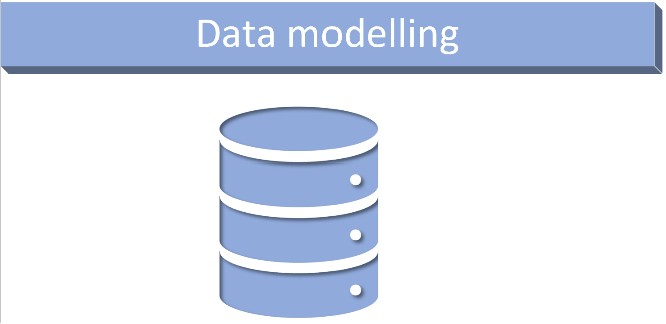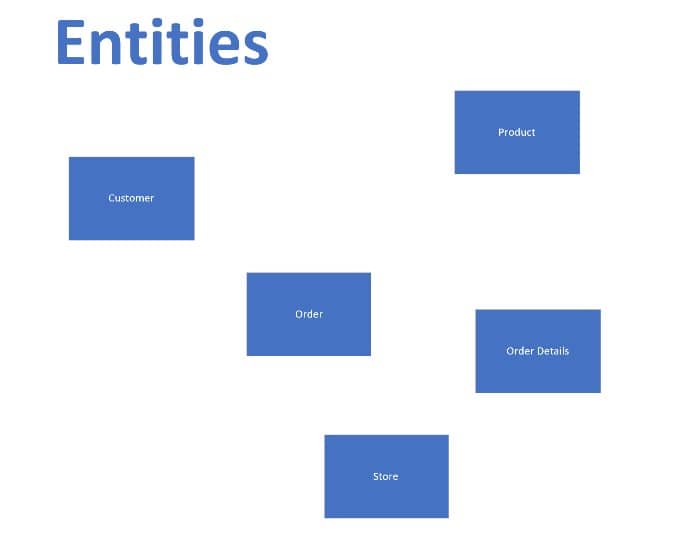What is Data Modelling – Fundamentals and Guidelines

Today in this article, we will go over Data Modelling – Fundamentals and Building Blocks and their usage guidelines.
What is Data Modelling
Data modeling is an important technique for effective database design, understanding the data requirements of a particular use case, and offering a structured method for understanding, representing, and implementing data structures for a given requirement.
Data Modelling normally occurs at the beginning of the development process to understand and document business requirements before database implementation.
This means it heavily helps you identify and documentation of business logic, rules, and relationships to ensure that the data model aligns with business objectives.
Data modeling focuses on organizing data at a Conceptual or Abstract or Physical level.
It aims to understand the information requirements of a business or system and define the relationships between different data entities.
Data modeling utilizes techniques like Entity-Relationship Diagrams (ERD) to represent entities, attributes, and relationships between entities, but this evolution and brainstorming does help you define your requirements in a true sense.
Along with facilitating discussions, it ensures changes to the design are visited during the early stages of development. In the world of development, which fully relies on design in the first place this does help in a greater way.
Data Modelling encourages communication between various stakeholders including the product owner, scrum, developers, or architects by providing a visual representation of data concepts that is accessible to both technical and non-technical audiences.
It very good technique for extending logical and physical design, normalization, relationship mapping, and performance optimization at the very beginning of use case or requirements explorations.
SQL and NO SQL – Data modeling is still a valid technique
Data Modelling operates at a more elevated level of abstraction, stressing entities, attributes, and relationships without getting into specific database implementation details, and hence this technique’s value holds for SQL or No SQL database design.
The outcomes of Data modeling ensure conceptualization, understanding, and representation of data requirements to various stake stakeholders and hence build confidence in the product which is going to evolve later stage as deliverables.

Type of Data Modeling Concepts
Conceptual Data Modeling
- Focuses on the high-level representation of the domain entities, business concepts, and relationships within a system.
- Helps in getting all the the fundamental entities, attributes, and relationships between.
- Provide a clear and abstract view of the business requirements, serving as a foundation for further development.
Logical Data Modeling
- This modeling helps translate the conceptual data model into a more detailed and structured format that can be implemented in a database.
- Defines tables, columns, fields, data types, relationships, and constraints for the given database management system.
- It acts as a bridge between the conceptual model and the physical implementation, ensuring a comprehensive and consistent representation of data.
Physical Data Modeling:
- Focuses on the actual implementation of the database on a specific database management system SQL or No SQL.
- Includes details such as storage structures, indexing, partitioning, and other optimization techniques to enhance performance.
- Involves decisions about how data is stored, accessed, and retrieved at the physical level, considering the specific features and requirements of the chosen DBMS.
Building blocks of Data modeling
Entities in Data Modelling

The best way to judge an entity is as some type of “real-world subject.”
At the end entity represents ” a collection of attributes or fields.”
Entities represent distinct objects, concepts, or things within a system that are described and stored as data.
These entities encapsulate relevant information through attributes, defining the properties or characteristics associated with them.
For example, in a customer relationship system, a “Customer” entity might include attributes such as “CustomerID,” “Name,” and “Email.”
Identifying and modeling entities is foundational for a clear understanding of the information requirements and relationships within a given domain or system.
Attributes in Data Modelling
Attributes provide granularity to the data model, offering a way to distinguish and categorize information within entities.

By defining these attributes, data modeling achieves a more comprehensive representation of the underlying data, enabling the organization and retrieval of specific details associated with each entity in a structured and meaningful manner.
Characteristics or properties of entities that describe the data associated with them.
Attributes provide details about the entities and are often represented as adjectives, like “Name” or “DateOfBirth.”
Relationships in Data modeling

In data modeling, relationships establish connections between entities, defining how they interact. T
These connections convey associations and dependencies, crucial for understanding the dynamics within a system.
For instance, in a database for a library, a “Customer” entity may have a relationship with an “Order” entity, indicating the association between individuals requesting an order.
- Relationships specify the cardinality and nature of connections, such as one-to-one or many-to-many, providing a structured framework for data representation.
- By modeling relationships, data modeling ensures a comprehensive understanding of how entities relate to one another, fostering accurate and efficient retrieval of information from the database.
Keys in Data modeling

- Keys play a pivotal role in data modeling by uniquely identifying and organizing data within a database.
- In RDBMS or SQL worlds example – the “primary key” serves as a distinct identifier for each record, ensuring data integrity.
- Foreign keys establish relationships between tables, linking data across entities.
- Index keys enhance query performance, enabling swift data retrieval.
- Composite keys combine multiple attributes to create a unique identifier.
- In No SQL Unique Keys identify documents or entries within a collection, ensuring data integrity.
- In document-oriented databases, like MongoDB, keys often include a unique identifier, such as the document’s “_id.”
- In key-value stores, like Redis, keys serve as direct access points to values.
- NoSQL databases may also use composite keys or secondary indexes for diverse query patterns.
- Keys are crucial for optimizing data access, retrieval, and navigation in NoSQL databases, contributing to performance in managing various data structures and relationships.
Benefits of Data Modeling
Below are the top-level benefits of data modeling.
- Creating a structure for collaboration between your IT and business teams.
- Revealing opportunities for improving business processes by defining data needs and uses.
- Saving time and money on IT and process investments through appropriate planning.
- Reducing errors (and error-prone redundant data entry) while improving data integrity.
- Increasing the speed and performance of data retrieval and analytics by planning for capacity and growth.
- Setting and tracking target key performance indicators tailored to your business objectives.
Data modeling Tools
Here are a few useful tools for Data modeling examples:
- erwin Data Modeler is a data modeling tool based on the Integration DEFinition for information modeling (IDEF1X) data modeling language that now supports other notation methodologies, including a dimensional approach.
- Enterprise Architect is a visual modeling and design tool that supports the modeling of enterprise information systems and architectures. It’s based on object-oriented languages and standards.
- ER/Studio is database design software that’s compatible with several of today’s most popular database management systems. It supports both relational and dimensional data modeling.
- Open Source tools include open-source solutions such as Open ModelSphere.
That’s all! Happy coding!
Does this help you fix your issue?
Do you have any better solutions or suggestions? Please sound off your comments below.
Please bookmark this page and share it with your friends. Please Subscribe to the blog to receive notifications on freshly published(2024) best practices and guidelines for software design and development.